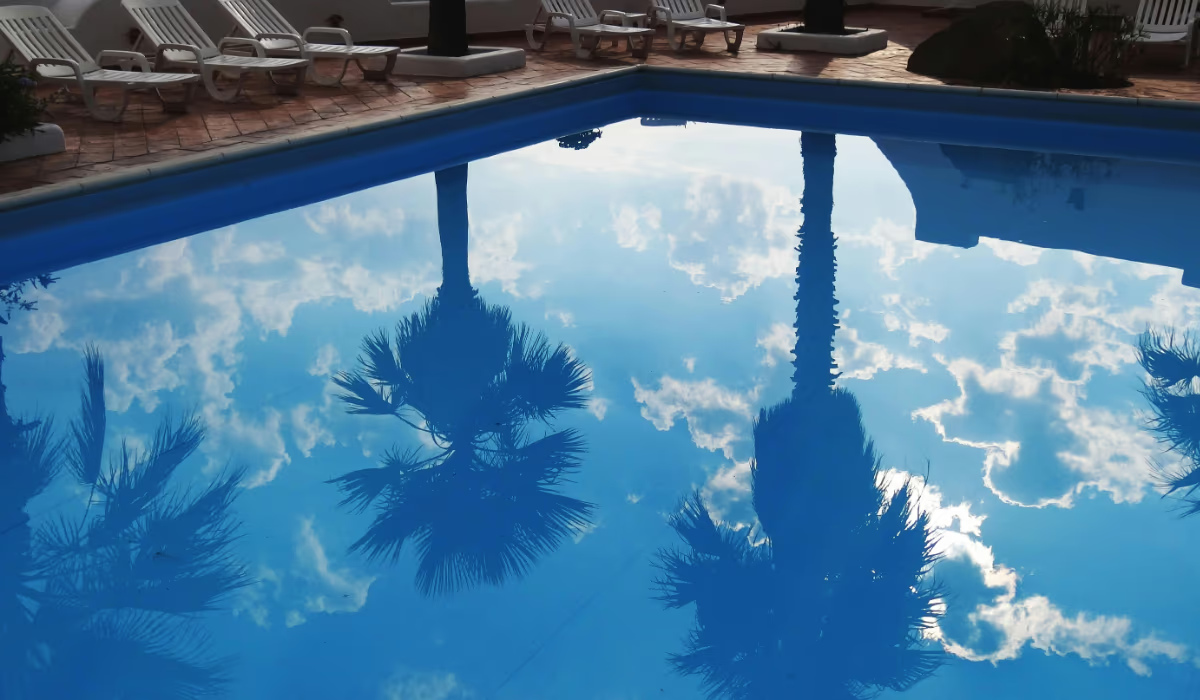Cloudy pool water is one of the most common frustrations for pool owners. When your water loses clarity and becomes milky or hazy, it usually signals problems in filtration, chemical balance, or contamination. Because many factors can contribute, diagnosing the root cause is essential before attempting to clear it. Below, you’ll find explanations of common causes and practical remedies.
Poor Filtration or Inadequate Circulation
If your filter is clogged, damaged, or turned off too often, it won’t remove fine particles, leading to cloudiness. A properly functioning filtration system should run regularly to recirculate water and clear debris. When circulation is weak—due to pump issues, dirty baskets, or blocked intakes—micro-particles remain suspended in the water rather than being filtered out.
Chemical Imbalance & Low Sanitizer Levels
When chlorine or other sanitizers are too low, bacteria and organic matter proliferate, clouding the water. Similarly, if pH or alkalinity levels get too high, certain minerals precipitate, causing turbidity. Chemical imbalance might also mean that your sanitizer is being wasted or neutralized too quickly, further reducing clarity.
Algae & Organic Contaminants
Early stage algae growth or dissolved organic matter can make your pool appear hazy. Even if the water hasn’t turned green, the presence of algae or decaying plant matter, leaves, sunscreen, body oils, or other organics can cause cloudiness. These organic compounds compete with the sanitizer and strain the filtration system.
Mineral & Particle Overload
High concentrations of calcium, metals, or other minerals can precipitate out of solution and float as microscopic particles. Also, when rainfall, wind, or construction nearby introduce fine dust or soil into the pool, those fine particles can overwhelm your filter’s capacity, especially if the filter media is old or inefficient.
Faults in Filter Components
In some filtration systems (such as DE filters), if internal screens tear or the filter media is damaged, the system may no longer trap fine particles properly. That allows clouding agents to pass right back into the pool. Similarly, if you have sand or cartridge filters with degraded or aged media, they lose effectiveness over time and let more particles through.
Steps to Clear a Cloudy Pool
Start by checking and cleaning your filter, pump basket, and skimmer baskets. Ensure the pump is running enough hours per day to support full turnover. Test your chemical levels—chlorine, pH, alkalinity, hardness—and adjust to recommended ranges. If algae or organics seem present, shock the pool and brush surfaces to dislodge buildup. Use a pool clarifier to bind fine particles for easier filtering, or, in severe cases, use flocculant and vacuum the clumped particles. If cloudiness persists, partial draining and refilling may help dilute excess minerals.
Conclusion
A cloudy pool usually results from a combination of filter failure, chemical imbalance, organic contamination, or mineral overload. By systematically addressing filtration, circulation, chemical levels, and contaminants, you can restore clarity. Consistent maintenance and monitoring are keys to preventing cloudiness before it becomes a serious issue.
FAQs
Is a cloudy pool safe to swim in?
Not always. Cloudy water reduces visibility, which can hide hazards, and may indicate bacterial or chemical imbalance, so it’s best to resolve the issue first.
How soon should my pool clear up after treatment?
It often takes 24 to 48 hours if the underlying cause is addressed properly; using clarifier or flocculant can speed things up.
Can too much chlorine cause cloudiness?
Yes. Over-chlorination can combine with contaminants and change water chemistry, resulting in turbidity or milky appearance.
How much should I run the pump daily to avoid cloudiness?
A good rule of thumb is to run your pump so that the entire pool water volume is turned over at least once per day—this often means 8 to 12 hours or more depending on pool size and usage.
Will adding fresh water help clear a cloudy pool?
Diluting with fresh water helps when mineral buildup is severe, but it’s not a stand-alone fix. You still need to correct filtration and chemical balance.







